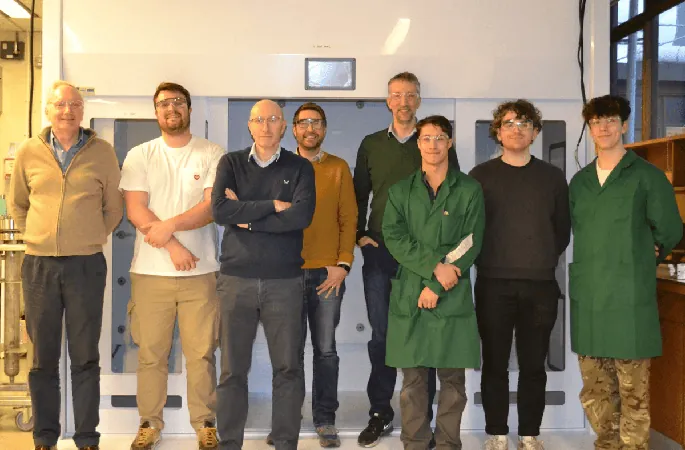
Scientists Unveil Groundbreaking Insights into How Cells Battle UV Damage
2025-03-21
Author: Rajesh
Introduction
Ultraviolet (UV) radiation is notorious for its potential to inflict damage on our DNA, a process that can accumulate and contribute to severe health issues like skin cancer. However, recent research highlights the remarkable capabilities of our cells to repair this damage. A new study published in *Nature Communications* dives deep into the intricate mechanisms at play, revealing how our genomes can physically rearrange themselves to prioritize the repair of DNA damaged by UV rays.
The Impact of UV Radiation on DNA
DNA, resembling a complex, tightly wound coil, must be meticulously organized to fit inside the minuscule nucleus of each cell and to enable prompt access to essential genes. Unfortunately, UV radiation can create tiny ruptures or lesions in DNA strands, disrupting essential cellular functions. The good news? The structure of the DNA adapts dynamically, allowing for efficient detection and repair of these lesions.
Research Findings
Study author Ogun Adebali emphasizes, "DNA isn’t just a static code; it’s dynamic and incredibly responsive. The way DNA is organized allows the cell to act swiftly in the face of damage." In their research, scientists meticulously analyzed genomic data revealing subtle changes in the interactions between different DNA segments following UV exposure. They pinpointed the specific locations of the damage and discovered how the genome reorganized itself to facilitate repairs. Importantly, the areas of the genome where activity peaked also corresponded to the sites most urgently needing repair. Thus, even in the aftermath of UV damage, critical cellular processes continue to function.
Gene Expression Changes
Moreover, it was observed that UV radiation triggers alterations in gene expression. Genes associated with cellular defense mechanisms became more active, enhancing the cell’s survival in stressful conditions. For instance, genes involved in managing inflammation were observed to ramp up their activity.
Rapid Response to Damage
"What’s remarkable is witnessing this intricate coordination between the 3D genome, transcription, and DNA repair," commented Veysel Oğulcan Kaya, the first author of the study. "What astonished us the most was how rapidly the DNA damage response occurs – within just twelve minutes post UV exposure. Even more impressive was our ability to detect early recovery signs within the first thirty minutes."
Future Implications
With these groundbreaking findings, researchers are optimistic that this understanding of DNA repair mechanisms could pave the way for improved treatment strategies for skin cancer. They aim to leverage this knowledge to develop innovative medications that stimulate the body’s intrinsic DNA repair systems.
Conclusion
"This study is merely the tip of the iceberg," adds Adebali. "Our discoveries lay the groundwork for further exploration into how cells safeguard themselves against a spectrum of environmental stresses, extending beyond just UV damage." The implications of this research could not only transform our approach to skin cancer treatment but also enhance our understanding of cellular resilience against various types of damage, potentially revolutionizing fields such as regenerative medicine and cancer therapy.


 Brasil (PT)
Brasil (PT)
 Canada (EN)
Canada (EN)
 Chile (ES)
Chile (ES)
 Česko (CS)
Česko (CS)
 대한민국 (KO)
대한민국 (KO)
 España (ES)
España (ES)
 France (FR)
France (FR)
 Hong Kong (EN)
Hong Kong (EN)
 Italia (IT)
Italia (IT)
 日本 (JA)
日本 (JA)
 Magyarország (HU)
Magyarország (HU)
 Norge (NO)
Norge (NO)
 Polska (PL)
Polska (PL)
 Schweiz (DE)
Schweiz (DE)
 Singapore (EN)
Singapore (EN)
 Sverige (SV)
Sverige (SV)
 Suomi (FI)
Suomi (FI)
 Türkiye (TR)
Türkiye (TR)
 الإمارات العربية المتحدة (AR)
الإمارات العربية المتحدة (AR)